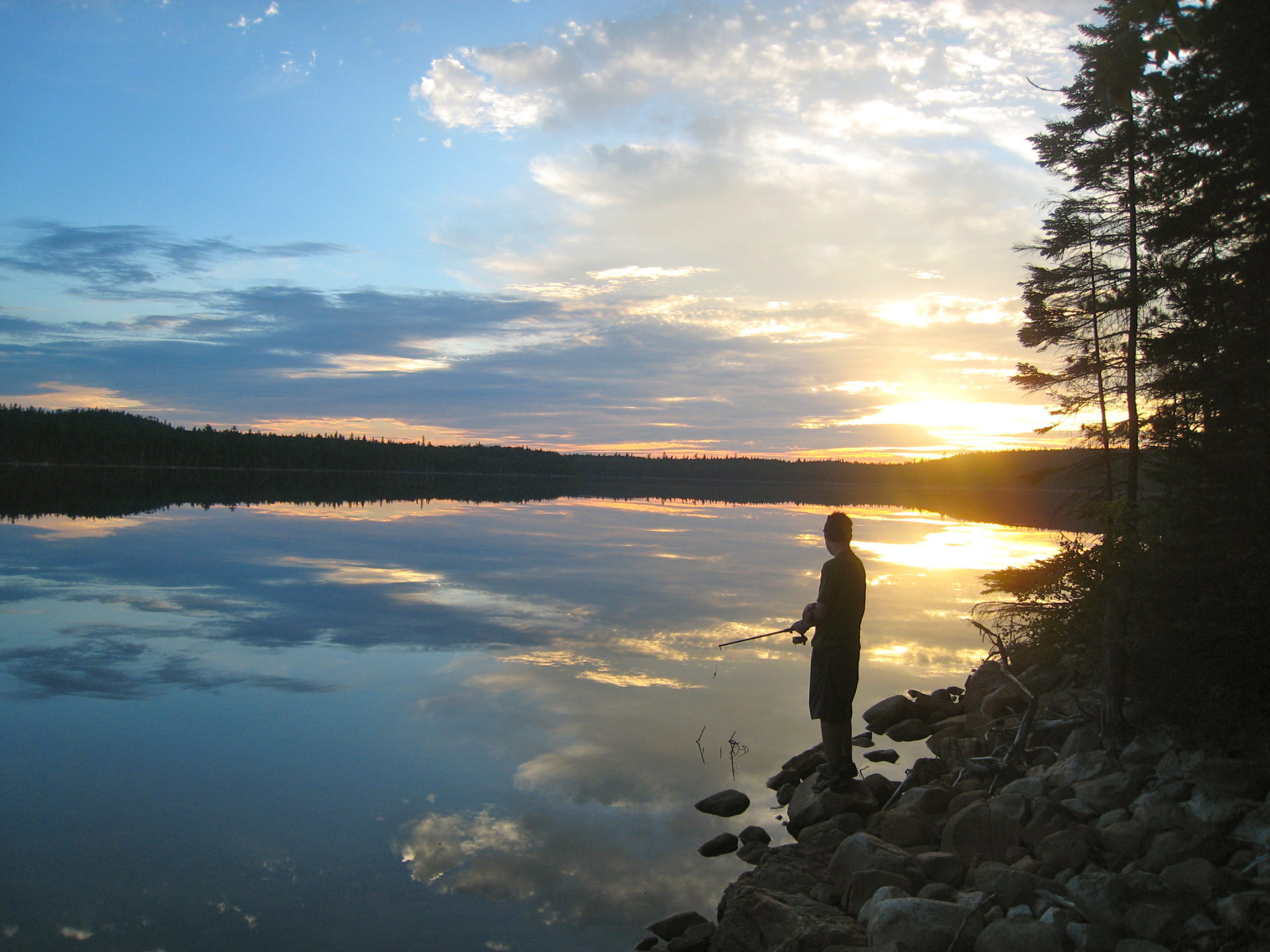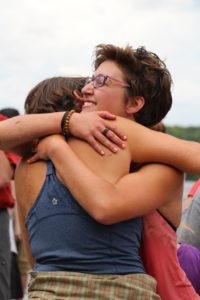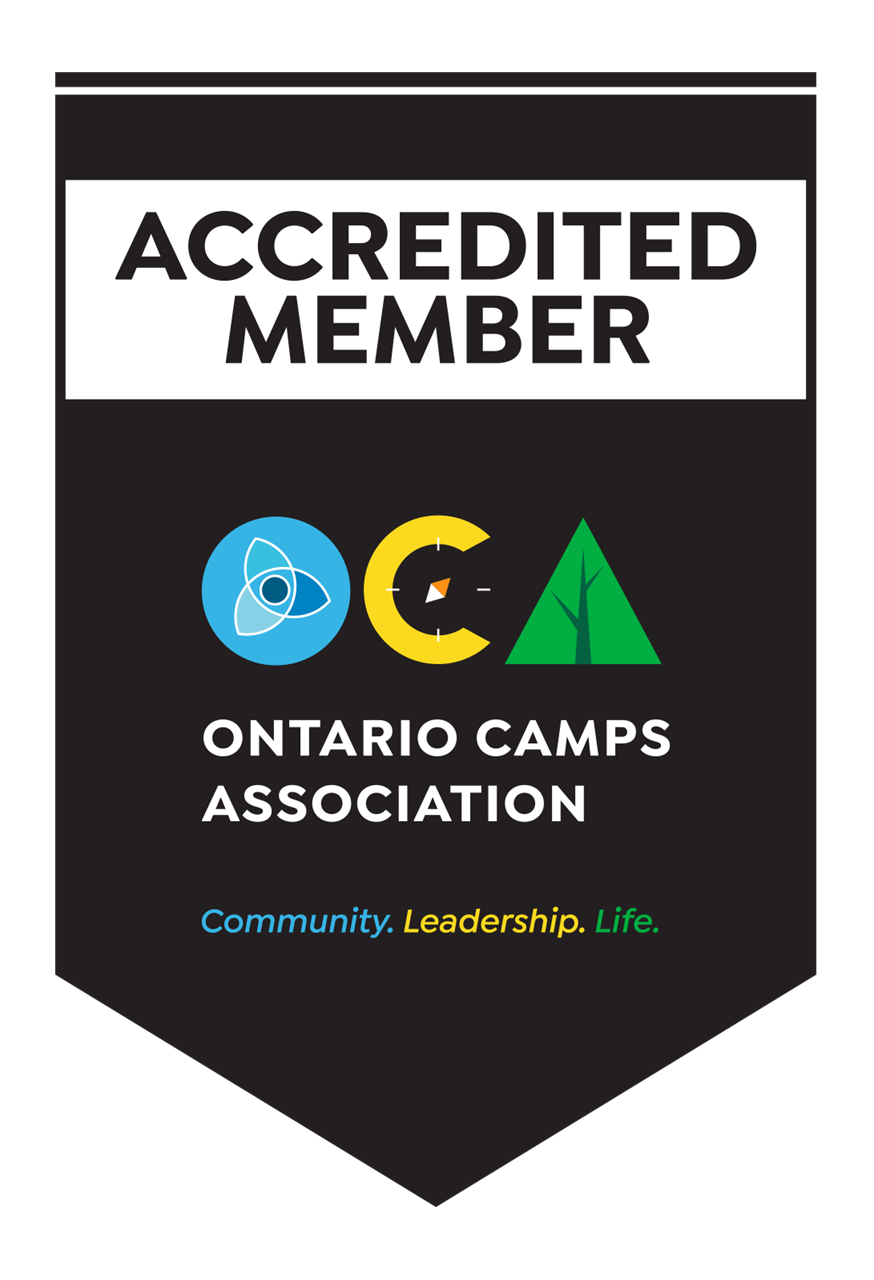Like it? Share it!
By: Michael Woo, Excalibur participant 2006
I was excited about going to summer camp for the first time. I felt a little bit nervous, too, because I’d be away from home for two weeks and I didn’t know what to expect. I had a long list of items to bring with me. Into my large duffel bag I put a water bottle, iodine tablets, clothes, shoes, two flashlights, sunglasses, sunblock, a good book, a sleeping bag, and many other things.
At about 5 o’clock on Sunday afternoon, July 29th, I waited with my mom and dad at Lakeland Airways in Temagami. It was warm and sunny. Other kids from down south and the United States were there, too. We were waiting to get flown to Langskib Base Camp. The Beaver float plane made three trips. The first two trips carried campers. The third trip carried our luggage. I flew in on the first trip. I think I had the best view because I was allowed to sit beside the pilot. During the twenty minutes it took to make the flight I saw so much – islands, lakes, trees, boats traveling on the water, cottages and boathouses along the shoreline. I even saw a bear on an island. I saw how big Lake Temagami is and how busy it is in the summertime.
When we got off the plane at Langskib Island the staff welcomed us. The first thing we did was to begin to get to know each other. We got in a circle and played some name games. Then we brought our belongings to the cabins. We swam and fished at the dock before supper. Our first meal was home-cooked chicken and rice. It was delicious. After supper we fished and swam some more before we went to bed. It was a perfect evening in base camp.
Monday, July 30th, was another warm, sunny day. We got up at 7 a.m. After breakfast we were taught about canoes – how to pick up and carry a canoe, how to portage, and how to paddle using different paddle strokes. We were also taught how to handle the gear we’d be using on our ten-day canoe trip. We learned how to pack it in the wanigans. Then we were divided into canoe groups. We played a game called “Manhunt”. It was a mixture of hide-and-seek and tag. That game took us all over Langskib Island.
Mike Jarvis, our program director, told us the story of the sword, “Excalibur”. He compared the canoe trip we’d be taking to two kinds of journeys, an outer journey and an inner journey. He said that our outer journey would take us through lakes, cliff-jumping, camping and portaging. He explained that our inner journey would be about learning to get along with each other and helping each other with chores and hard jobs. Mike told us that learning to keep going when things get hard or uncomfortable is also part of the inner journey. He explained that kindness is part of strength and love is part of courage, and that every man needs to combine these four qualities.
My group was the youngest group. We were all ten and eleven years old. For our ten-day canoe trip my group had three leaders, seven boys and five canoes. On Tuesday, July 31st, we packed only what we really needed in the wanigans. Our first campsite was at the Lower Sharp Rock Inlet Narrows. Then we headed east from Lake Temagami and portaged into Ferguson Lake. My first portage was a disaster because I forgot to bring my insect repellant with me. For a while I felt very sad and homesick. But after this first portage I started to feel better because our leaders encouraged us. The encouragement that helped me the most was, “Never say I can’t, always say I can”.
Our second portage was from Ferguson Bay into Kokoko Lake. We made our campsite at a point on Kokoko Lake. Then we did some swimming, fishing, canoeing, and relaxed. We slept in a big ten-person tent each night. I started to really enjoy the canoe trip.
At our Kokoko Bay campsite we found our treasure hunt map and the clues that would help us during the next three days while we paddled all over to find our treasure. Our program director, Mike, met us at this campsite. We traded our small canoes for one large voyageur canoe. In it we traveled as a group to find our treasure.
On our treasure hunt we explored the south arm of Lake Temagami, passed Bear Island and Rabbit Nose Island to reach the north arm of the lake. We made our fourth campsite here on the shore and searched for more clues. The clues told us to go to Devil Mountain, Secret Lake, and then to Seal Rock. We made our fifth campsite at Seal Rock.
Next we headed to Hush Hush Lake in our voyageur canoe. We found more clues which told us our treasure might be at the Lower Narrows. When we reached the Lower Narrows campsite our clue told us to find our treasure only at midnight, the “Dead of Night”. Mike met us again at this campsite. As a treat to reward us for safe canoeing and doing a good job of meeting the challenges of the trail, he brought us more food.
At midnight we hunted for our treasure. We started out using a flaming torch but it fell off the stick into a creek so we had to use our individual headlights. We found our treasure in an ammo box – it was filled with a lot of really cool stuff for the group. We sorted through it and shared everything.
The day after our treasure hunt we headed back to Langskib Base Camp. We had a great meal of tacos. Then we shared our experiences on the canoe trip. By nighttime I felt really homesick for the second time because I started thinking about what I missed my mom and dad, the restaurant, and even the washroom at home. I overcame my homesickness again.
The morning of Friday, August 10th, we cleaned ourselves up at base camp and put on clean clothes. We had a gift exchange. I exchanged my camp knife that had a can opener and other tools on it for a white whittling crystal.
Friday afternoon we left Langskib Base Camp by barge. About halfway to Northwaters Base Camp we transferred to a voyageur canoe so that we could paddle to the Northwaters dock. When we arrived there we were given a hero’s welcome by the staff, our parents, friends, and all those noisy girls from the Northern Lights program. I was surprised to see my mom and dad. They came to the Northwaters Base Camp to meet me and stay for the barbecue party to celebrate the second-last day of camp. My mom and dad said that I looked a bit different. My skin was darker from the sunshine. I looked thinner, stronger, and very happy to them.
After the barbecue all of the campers were given a chance to tell stories about the funniest and most challenging parts of our canoe trip. To end the party we entertained everyone. We had taken a song by the Beatles, called “The Yellow Submarine” and changed it into a song we called “The Big Red Canoe”. After we sang that song, we performed a hip-hop dance that one of our campers, Max, had taught us. At the end of the celebration we were given two choices. We could stay overnight or go by boat to the Manitou Landing with our parents and go home. I chose to go home.
For me, the best part of the canoe trip was the treasure hunt. It was so much fun. The whole camp experience was great for me because I learned so many new things. I learned how to canoe, portage, pitch a tent, read a map, cook outdoors, and how to face my homesickness. I made lots of new friends. I learned a new custom, too. While we were on our ten-day canoe trip we met many different groups of canoeists, motor boats, and houseboats. I waved to everyone I saw because our leaders told us that waving is a custom on the water when you meet people.
I took a 27 -picture disposable camera to camp. Sixteen of the pictures turned out. They’re good souvenirs of my Langskib experience. My coup (pronounced ‘coo’) stick is a very special souvenir. I made my coup stick when we were on our canoe trail. We found sticks in the firewood pile. We carved them and added designs. Then we wrapped our coup sticks with red sashes. The red sashes remind us that we’re brothers of Langskib and we’ll always be bonded together. I’ll keep my coup stick always. It reminds me of my coups – what I learned to do as a Langskib camper, what I learned to overcome, and the friends I made.





